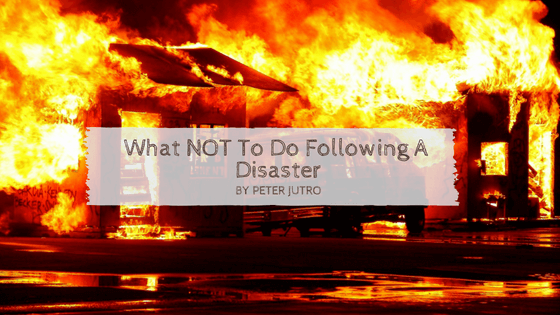In the aftermath of virtually any major disaster, the internet overflows with haunting images of what were, only days before, whole communities. Homes are gone; in their place, shattered debris sits strewn across the streets. Newsreels flash with the hunched profiles of people; some sifting through the rubble looking for anything left intact, others dazed; just wandering: all of them struggling to cope with unimaginable loss. Even for those unaffected, it’s typical to feel, through such images, a reflection of victims’ pain as well as the urge to relieve it.
Empathy is what drives the desire to help, but allowing our compassion to override wisdom can cause us to take actions that exacerbate the damage, and complicate relief efforts. There is a right way to offer aid following a disaster, but there are also a number of (very common) wrong ways, which, while well-meaning in nature, only worsen the problems they aim to solve.
Don’t Jump to Volunteer Onsite
In 2012, Hurricane Sandy devastated the mid-Atlantic coastline. News of the damage saw a tidal wave of volunteers swarm the interstates. Highways were congested with would-be helpers, many of whom accomplished little more than exacerbating an already problematic gasoline shortage. Those who managed to arrive did so in droves, drawing the attention of emergency workers away from vital tasks.
Instead of immediately heading to ground zero, simply giving a small cash donation to a reliable organization can work wonders. For those determined to volunteer, the best option is to get involved with a professional organization.
Don’t Blindly Send Clothes, Supplies
Following some of the world’s most severe disasters, it’s common for warehouses to be stuffed full with received clothes, blankets, teddy bears and all manner of miscellaneous supplies; half of which are of no help in improving the situation at hand. In addition, all of them must be sorted and catalogued by emergency workers, who should be handling other tasks. In a best-case scenario, excessive supply donations waste time which would be better spent helping with rebuilding and relief.
Frequently, however, such donations meet the fate of the tons of clothing piled uselessly on the beaches of Indonesia after the Indian Ocean Tsunami of 2004, as workers simply don’t have time to sort through everything they receive. As they offer maximum utility and take up no space, cash donations are nearly always preferable, but people interested in donating supplies can check the websites of relief groups for lists of needed items.
Don’t Think That Recovery Will Be Quick
It’s deceptively easy to forget about a disaster in the following weeks and months, once the media attention has drifted elsewhere. But rebuilding a community from the ground up isn’t a short term task, and the need for aid doesn’t evaporate along with the news coverage. Depending on the scope of the disaster, it can take years to fully restore an area. In any case, maintaining consistent support will expedite the recovery process.

